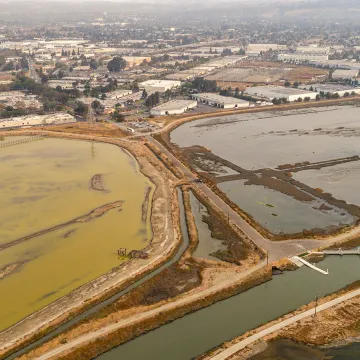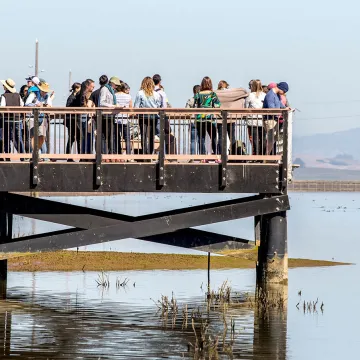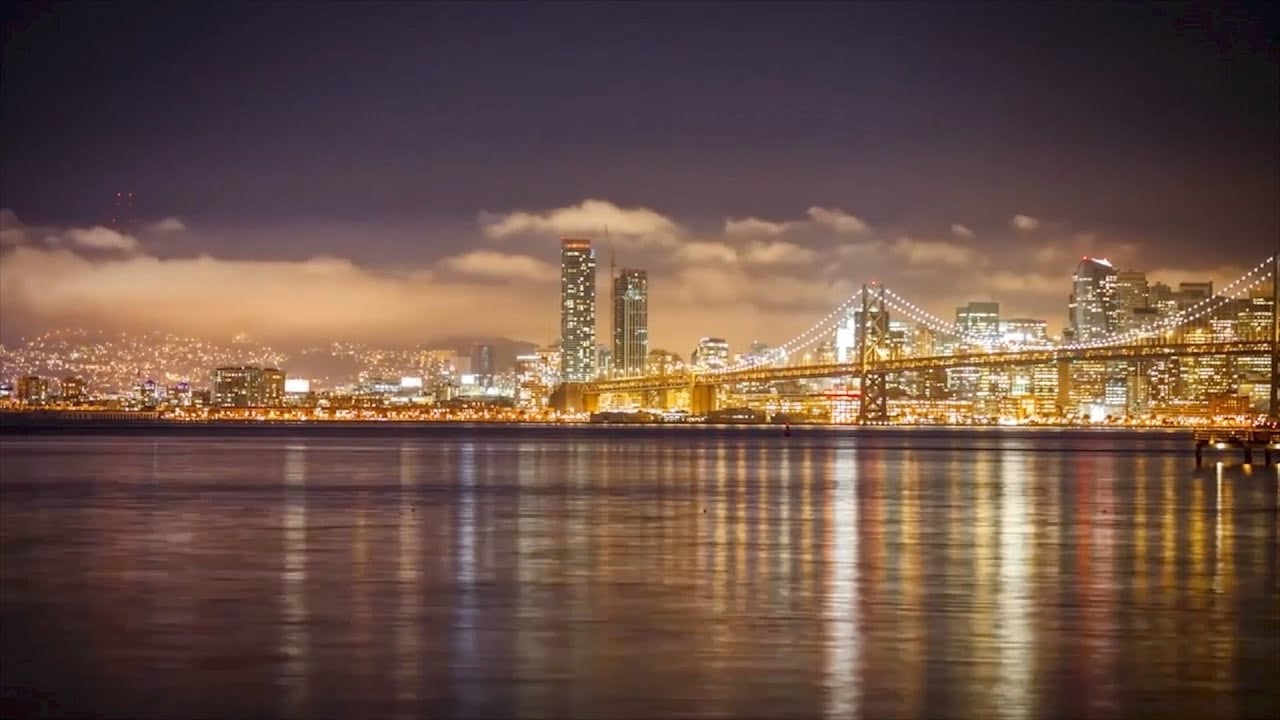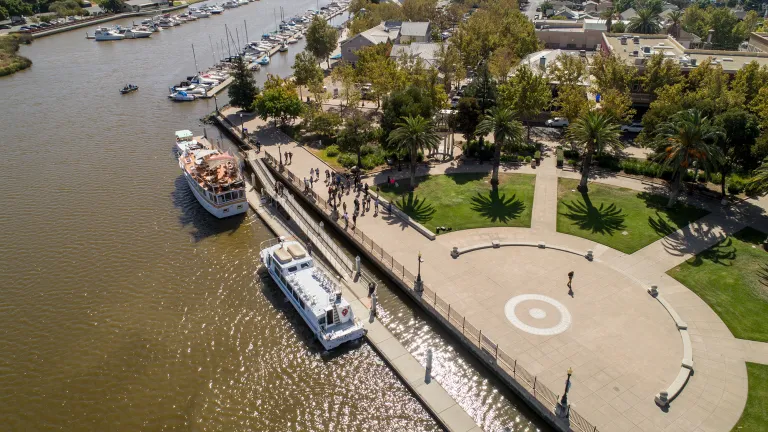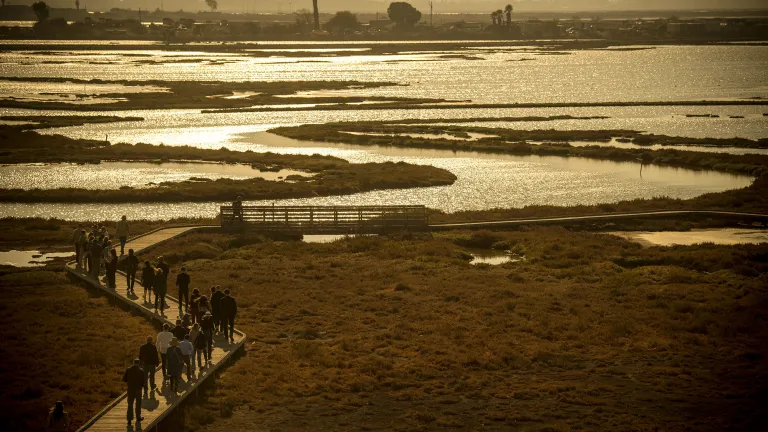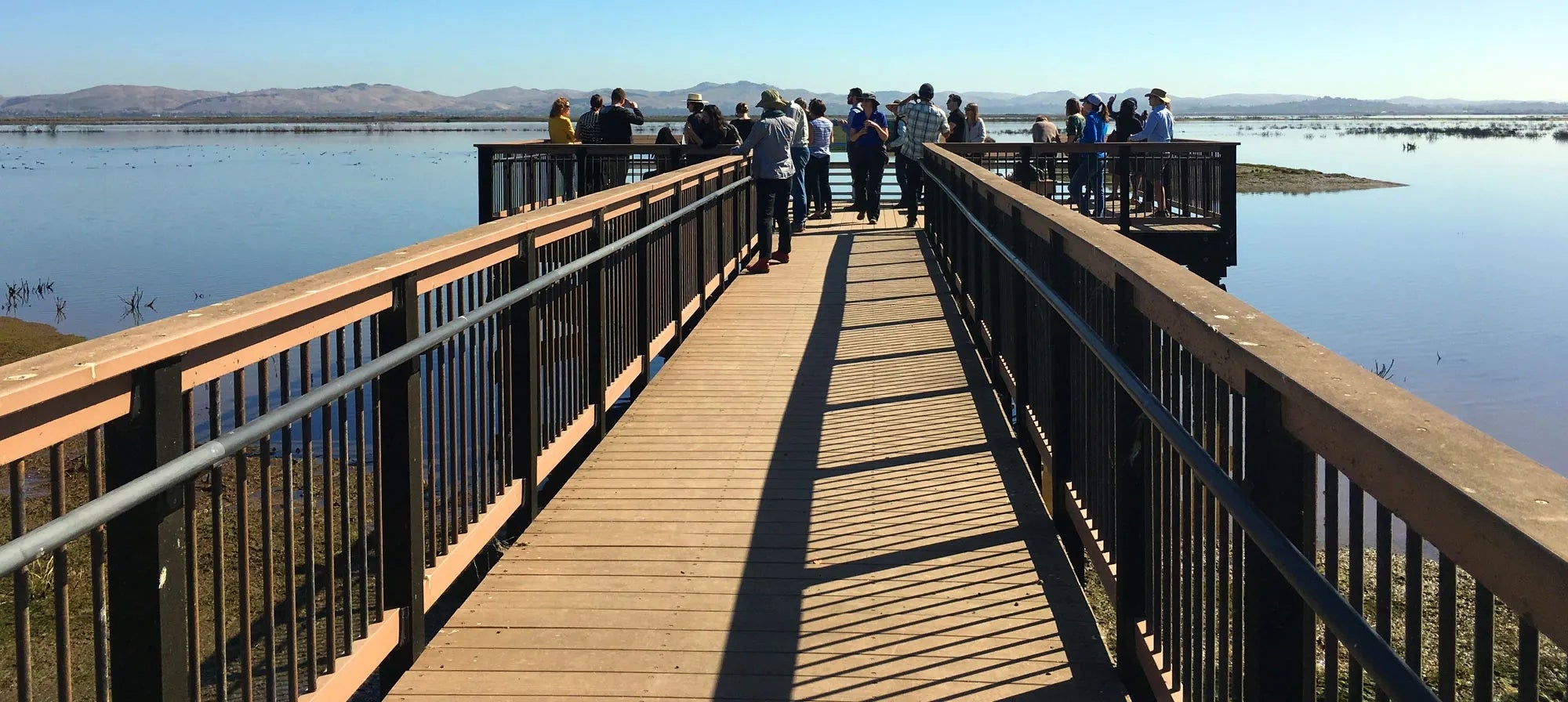
Resilient by Design | Bay Area Challenge today announced locations for the resilience design projects to be pursued by 10 international design teams over the next five months. During the Design Phase, local residents, public officials, engineers, architects and other experts will come together to create resilient solutions that address the impacts of climate change and regional inequity before disaster strikes.
Spanning the Bay Area, the selected sites are a significant next step in the region’s fight to protect vulnerable communities facing rising sea levels and rising rents, while charting a course forward that is rooted in regional collaboration.
“This Challenge brings the best minds together, from this region and beyond, to flip the script on how we approach resilience,” said Amanda Brown-Stevens, managing director of Resilient by Design, which is cosponsored by MTC and hosted at MTC's offices at the Bay Area Metro Center in San Francisco. “We are stepping outside traditional approaches to address climate-related vulnerabilities before we feel their biggest impact while strengthening our region’s ecological and social resilience, and creating a more economically just Bay Area.”
“The Bay Area’s commitment to protecting vulnerable communities through innovative design solutions that will drive lasting change is inspiring — and we are so proud to support this challenge,” said Otis Rolley, regional director, North America for 100 Resilient Cities – Pioneered by The Rockefeller Foundation. “When given the chance to collaborate, communities can not only learn from one another but also work together to develop a blueprint toward a more resilient future. And that’s what this challenge is all about.”
Over the next five months, local residents, city officials and community-based organizations from each site will work alongside 10 Design Teams of local and international experts to address specific threats in their communities and build out a design idea at each site that can be replicated throughout our region and the world.
Officials from the winning cities expressed excitement over the prospect of working with the Design Teams. “The premise of the Bay Area Challenge is unique,” said Tom Butt, mayor of Richmond, the northern part of which is one of the selected sites. “This is not a government-driven process, but rather a true multi-stakeholder collaboration. This initiative will bring the design expertise of the Challenge teams together with the local expertise of community and governmental stakeholders in order to collaboratively develop design ideas and implementation plans that will provide a lasting legacy for generations to come.”
“We are excited to work in tandem with the BionicTeam to design community-based, resilient solutions for the Canal District and central San Rafael,” said Shore Up Marin Co-Director Douglas Mundo. “BionicTeam has shown that they are committed to working in partnership with Shore Up Marin, and we're pleased that they are putting social equity and community voices at the center of the planning process. We can’t wait to start building a stronger, more resilient San Rafael together.”
“Local community engagement will ground our team’s thinking in the present while we think long term,” said Claire Bonham-Carter, lead designer on The All Bay Collective, which will focus on the San Leandro Bay-Coliseum area in Oakland. “Local community groups will help The All Bay Collective team generate solutions that have multiple benefits, providing social and economic resilience in the short term while building resilience to the longer-term environmental stresses of climate change and sea level rise.”
San Mateo County Board of Supervisors President Dave Pine sees the Challenge as an opportunity to lean into the technical expertise of the Design Teams, think creatively and ultimately, create lasting change in San Mateo County, which is home to South San Francisco, another of the selected sites. “Addressing the challenge of sea level rise in San Mateo County will require bold and innovative community-based solutions,” said Pine. “The expertise brought by the HASSELL+ team will be an invaluable resource as we strive to create resiliency and integrate our communities with a rapidly changing San Francisco Bay.”
One Design Team, P+Set (Permaculture Plus Social Equity), has a broader focus, in that it will design an ecoliteracy curriculum that will be piloted this spring with young leaders from three of the Bay Area communities most vulnerable to sea level rise.
By combining the technical knowledge of international experts with the local knowledge of Bay Area residents, the process aims to create solutions that will tackle ongoing climate issues impacting the entire Bay Area, like sea level rise, severe flooding, and seismic risks, alongside other, sometimes more pressing, challenges, including lack of housing, displacement, limited access to public land, and outdated transportation.
The announcement of the sites selected follows the Collaborative Research Phase, a two-month period of community tours around the San Francisco Bay, led by local residents, to learn about the challenges Bay Area communities face related to climate change in conjunction with broader challenges around infrastructure, affordability, and inequity.
Hailing from nine countries and 13 states, the 10 Design Teams were selected from 51 teams made up of over 350 local and global experts based on their community-centered design approaches to resilience and their preliminary Design Opportunities proposed. Teams selected for the Challenge have demonstrated their ability to think creatively and are ready to collaboratively assess and design with communities in this next phase.
Concluding in May 2018, the year-long challenge will result in 10 implementable, resilient solutions to be revealed just before Governor Jerry Brown’s scheduled Global Climate Action Summit in San Francisco, underscoring the Bay Area’s role at the forefront of the fight against climate change. For more information, see the resilientbayarea.org website.

